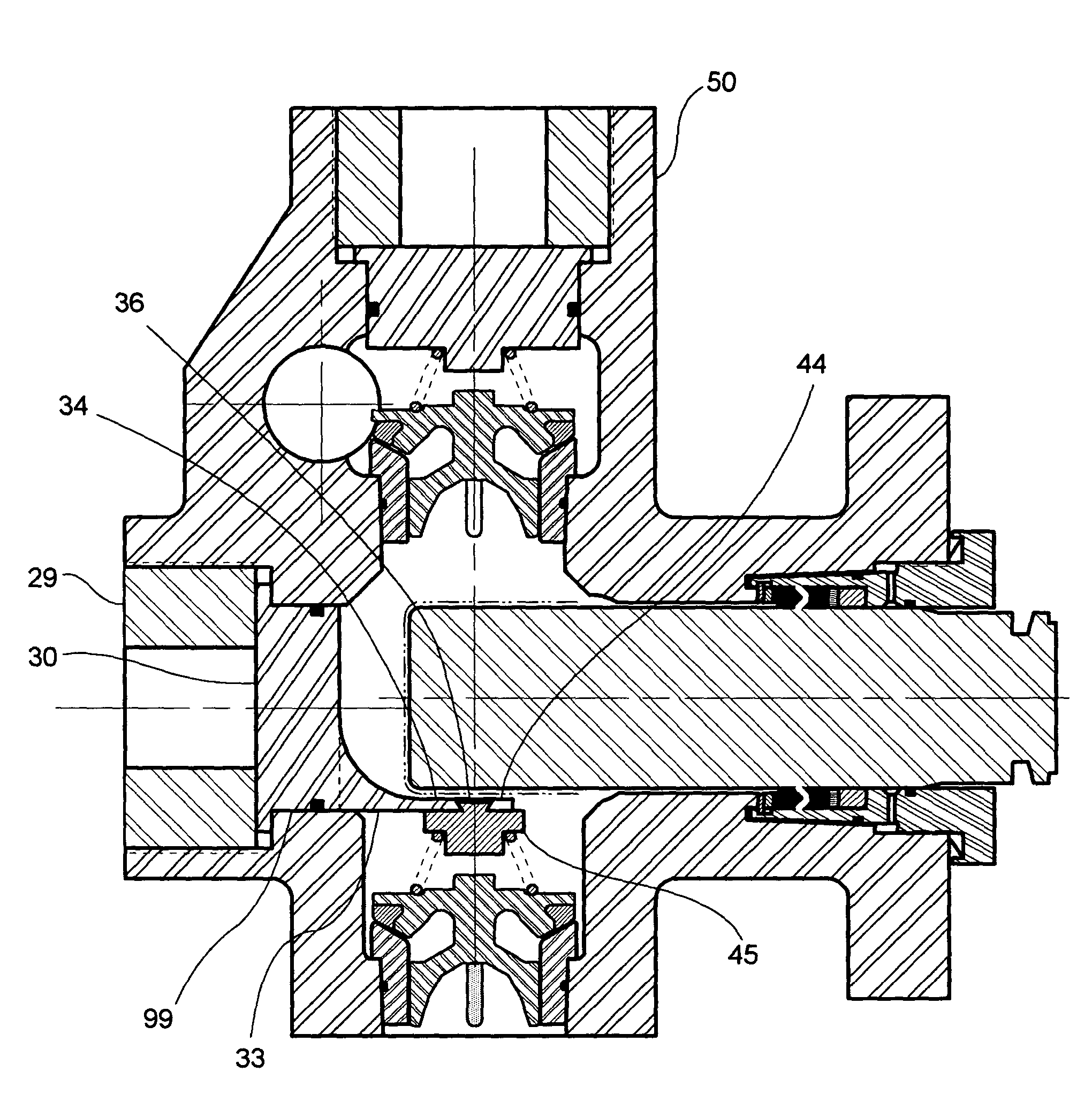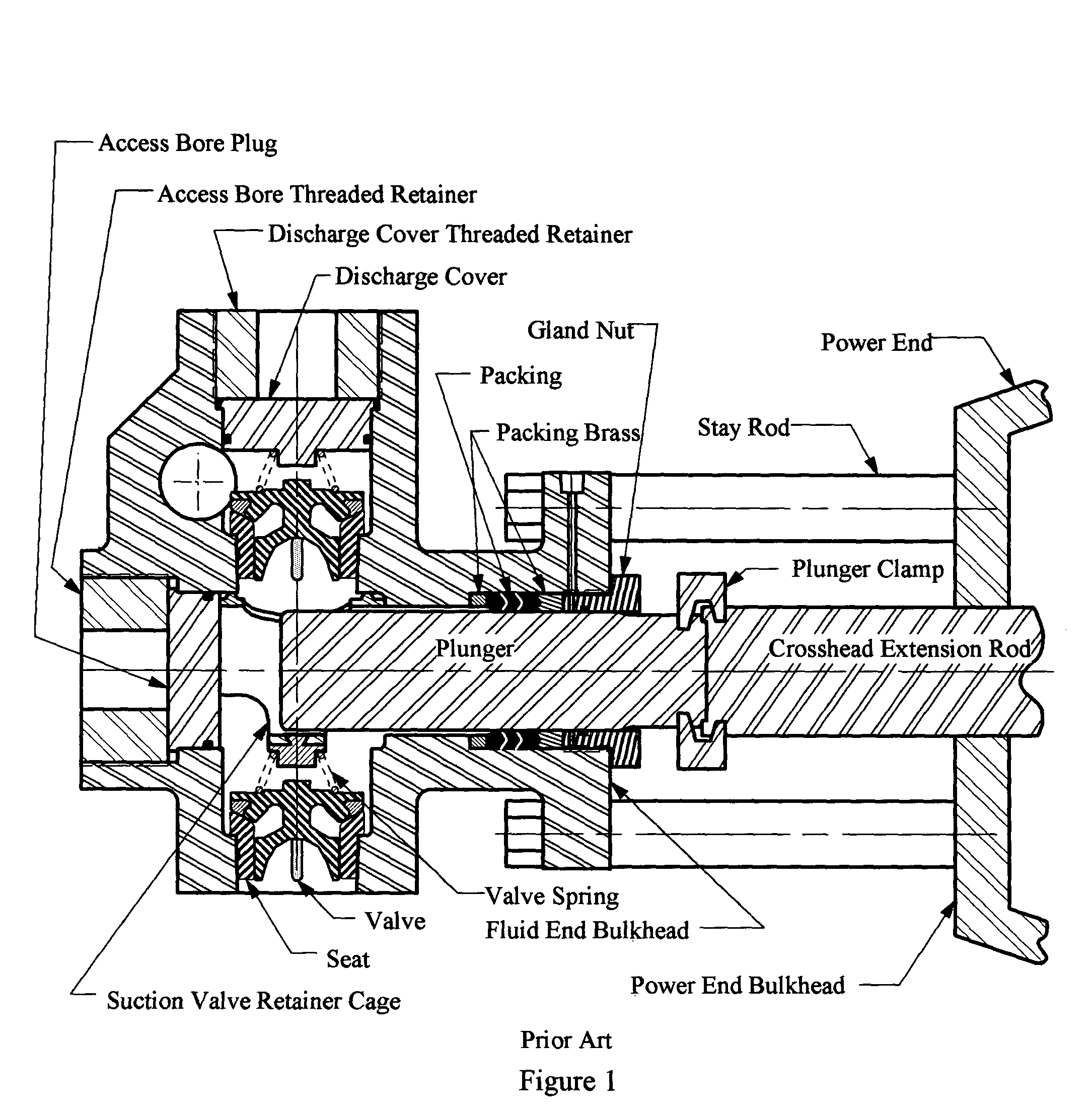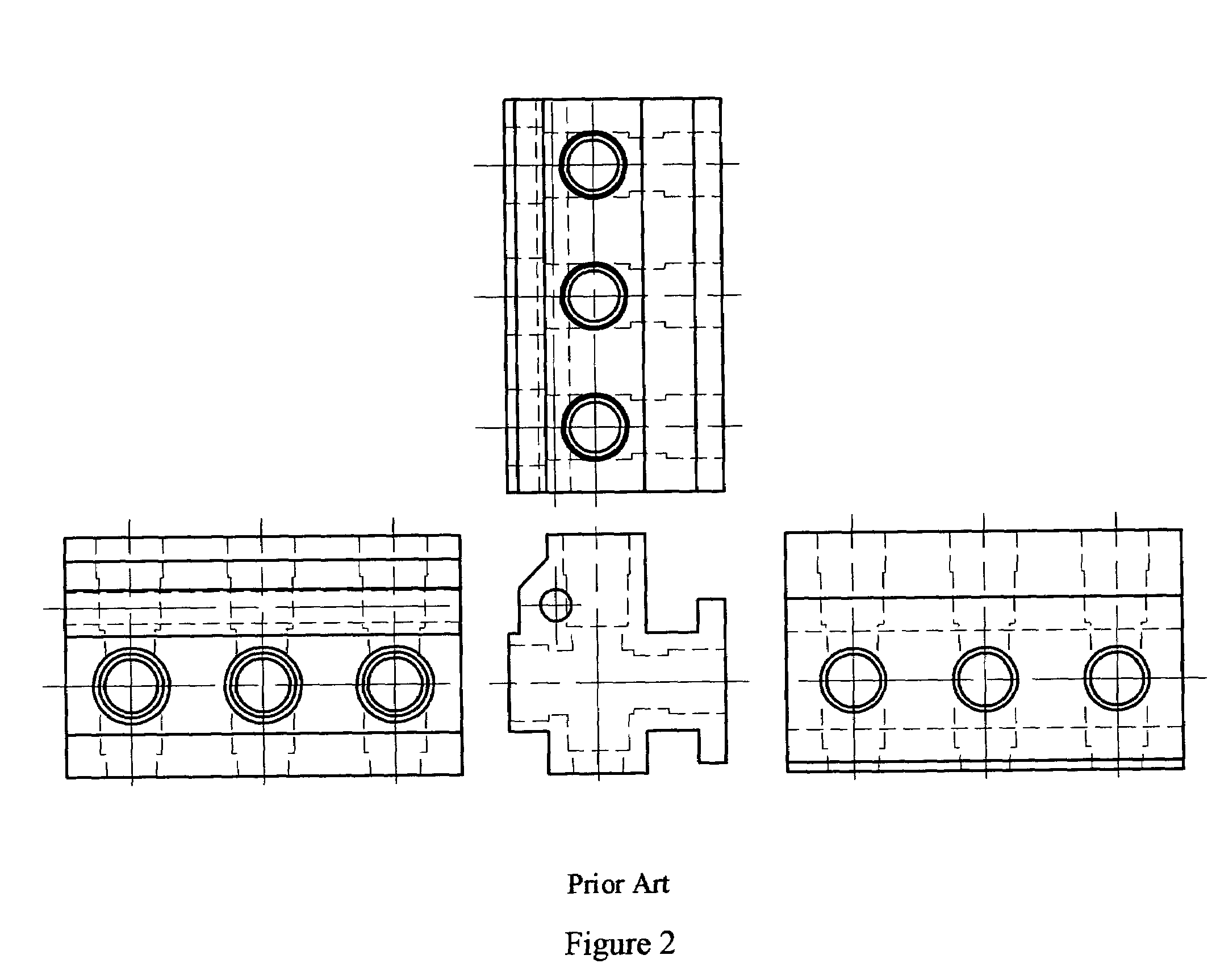Plunger pump housing and access bore plug
a technology of plunger pump and housing, which is applied in the direction of pump components, positive displacement liquid engine, thin material handling, etc., can solve the problems of y-block design, plunger pump housing failure, and housing fatigue of plunger pump
- Summary
- Abstract
- Description
- Claims
- Application Information
AI Technical Summary
Benefits of technology
Problems solved by technology
Method used
Image
Examples
Embodiment Construction
[0059]FIGS. 10A, 10B and 10C schematically illustrate three views of an access bore plug 30 of the present invention, intended for use in a plunger pump housing 50 having an offset access bore (as in, for example, FIG. 13). As seen in FIG. 10A, the elongated transverse cross-section of cylindrical portion 32 has a major axis (shown horizontal in FIG. 10A) and a perpendicular minor axis (shown vertical in FIG. 10A). Access bore plug features shown in FIGS. 10A, 10B and 10C include a flange 31 for securing the bore plug to plunger pump housing 50 using a threaded bore plug retainer 29 (see FIG. 13). A cylindrical portion 32 having a seal groove 132 extends longitudinally from flange 31, cylindrical portion 32 having an elongated transverse cross-section and extending longitudinally from said flange 31 sufficiently to slidingly and sealingly fit within a corresponding offset access bore cylindrical portion 99 in the plunger pump housing (see FIG. 13). Such a sliding and sealing fit wit...
PUM
 Login to View More
Login to View More Abstract
Description
Claims
Application Information
 Login to View More
Login to View More - R&D
- Intellectual Property
- Life Sciences
- Materials
- Tech Scout
- Unparalleled Data Quality
- Higher Quality Content
- 60% Fewer Hallucinations
Browse by: Latest US Patents, China's latest patents, Technical Efficacy Thesaurus, Application Domain, Technology Topic, Popular Technical Reports.
© 2025 PatSnap. All rights reserved.Legal|Privacy policy|Modern Slavery Act Transparency Statement|Sitemap|About US| Contact US: help@patsnap.com



